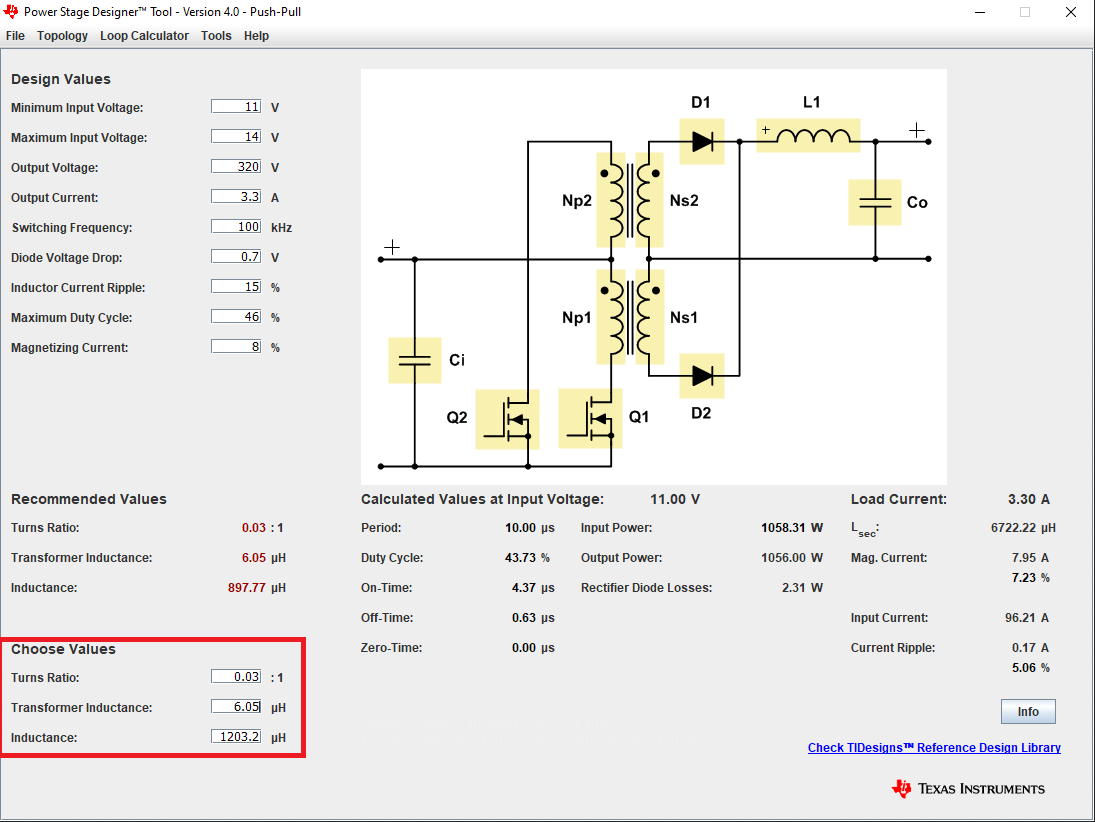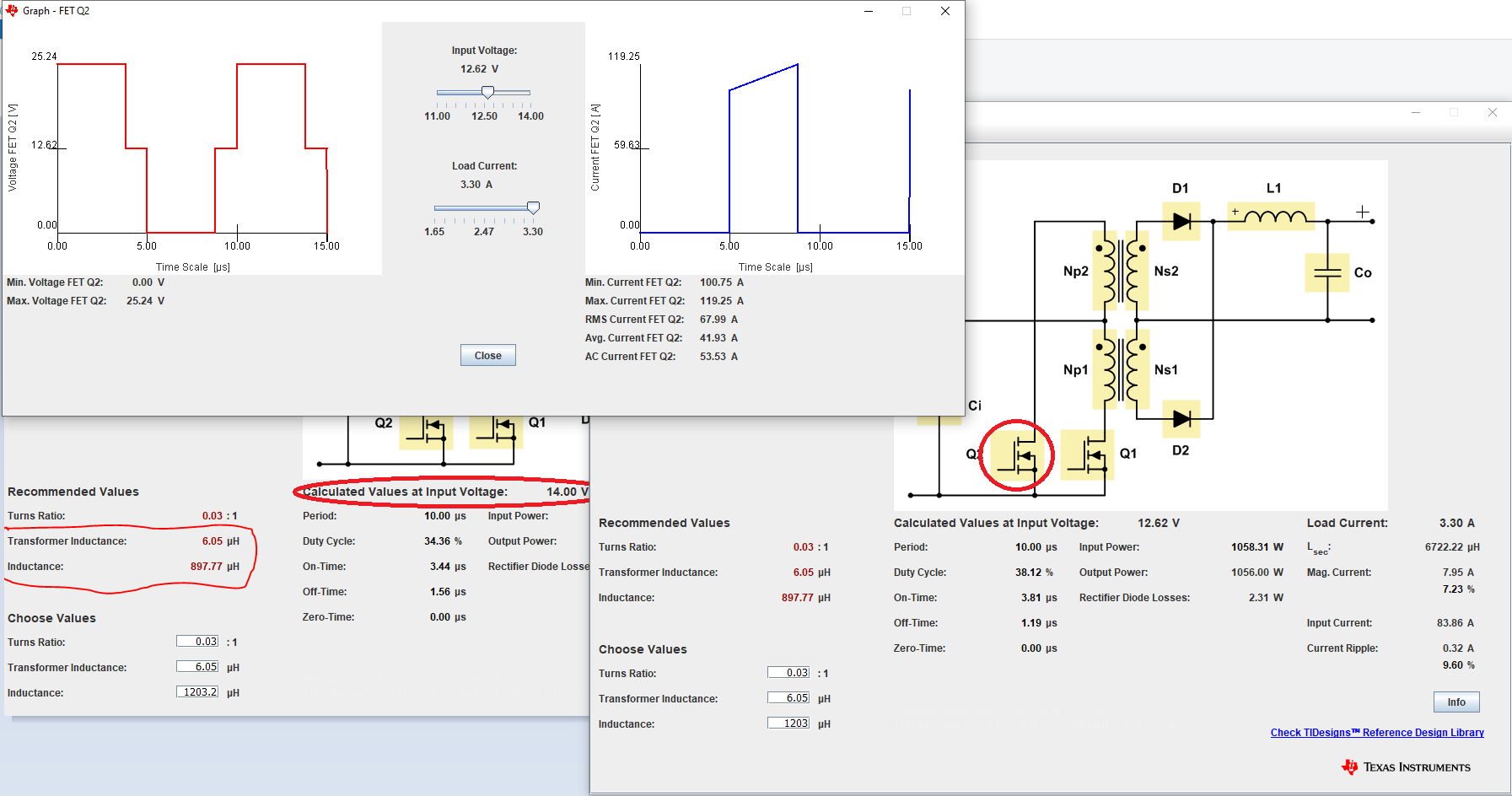Other Parts Discussed in Thread: TINA-TI, LM5033, UCC28951, UCC28089, PMP8787
I am trying to use UCC28950 excel design tool for my spec, unfortunately tool shows inductance 0.0H as my application is Step-Up.
input voltage: 12VDC
output : 325VDC
output power : 1KW
Please help with a reference design for the application
Thank you.



